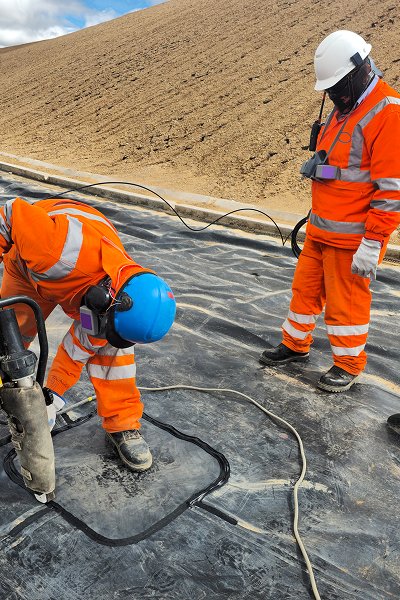What is Anti Grass Cloth ?
Anti Grass Cloth, also known as gardening cloth, ground cloth, and covering cloth, is a sheet material made of polypropylene (PP) or polyester (PET) through weaving or non-woven processes. Its main function is to prevent sunlight from reaching the ground, cut off the photosynthesis of weeds, and at the same time be water-permeable and air-permeable to avoid surface water accumulation or root rot.

Why are the edges of weed-proof cloth prone to failure?
Edge warping: Heavy rain, strong winds, vehicle rolling, etc. may cause the unfixed edges to warp, causing tearing or lifting of the entire cloth.
Weeds "drilling the edge": If there is a gap between the edge of the weed-proof cloth and the soil surface, weeds may drill out of the gap and "break the defense".
Soil erosion: Rainwater seeps into the ground along the edge, which may wash away the base, causing the weed-proof cloth to shift or even fail.
UV aging: The edges are exposed the longest. If they are not reinforced or protected, they will age faster than the middle and break earlier.
Edge fixing solutions in different scenarios
Gardening ground (orchard, vegetable garden)
Use U-shaped ground nails for fixing, and the recommended spacing is one nail every 30-50cm;
The nailing angle is recommended to be slightly tilted inward (about 15°) to enhance stability;
Crushed stone strips can be used to press the edges around to prevent wind from blowing up.
Large-scale agricultural bases
Use hot melt guns to heat-seal and overlap the edges;
Cover the edges with soil and compact 5-10cm to enhance stability;
Or use mechanical anchors to install mechanized fixing.
Green belts on both sides of the road
Use expansion screws + pressure strips to fix to the edge of the concrete;
The edge of the grass-proof cloth is slightly buried in the groove (about 5cm deep) and compacted;
Prevent movement caused by vehicle wind pressure or pedestrian trampling.
Roof greening and hard ground
Use PVC pressure strips + nails for fixing;
Or use roll adhesive + seam edge sealant for edge sealing;
It is necessary to ensure that the edges fit without hollows to prevent water accumulation or wind bulging.

Detailed explanation of the construction steps of the edge of the weed-proof cloth
Cut the weed-proof cloth according to the area, and reserve 5-10cm edge overlap space;
Pre-drain the drainage direction and determine the direction of the cloth surface.
Laying and fixing process
Lay the first piece of cloth to make it flat and wrinkle-free;
Pre-embed the edge or compact and weight along the edge;
Fix it with ground nails, one every 30-50cm, and strengthen the corners;
Overlap 5-10cm when laying the next piece;
Fix the intersection with double nails or pressure strips to prevent displacement;
Check whether there is warping, and press it back in time if there is.
Fixing quality inspection and maintenance suggestions
Regular maintenance
Inspect once every 3-6 months;
Check the firmness of the edges after strong winds and rainstorms;
Local damage should be repaired in time (weed-proof cloth patch + hot air gun welding or re-nailing can be used).
Q1: Is it better to nail the edge of the weed-proof cloth more?
A: No, it is necessary to nail the right amount according to the soil quality and wind conditions. Generally, one nail is enough every 30-50cm. Too dense will increase the construction cost and have no significant improvement.
Q2: Can the edge of the weed-proof cloth be fixed with glue?
A: It is feasible in small quantities, but it is not recommended as the main fixing method. Thermal expansion and contraction will cause the glue to fall off.
Q3: What are the consequences of not fixing the edge?
A: It is easy to be blown by the wind, water ingress, weeds "drilling the edge", and the cloth surface displacement, resulting in the failure of weed prevention.
Q4: What are the edge fixing methods suitable for roof greening?
A: PVC layering + screws or structural adhesive bonding is recommended to ensure that the edge is leak-free and does not warp.


